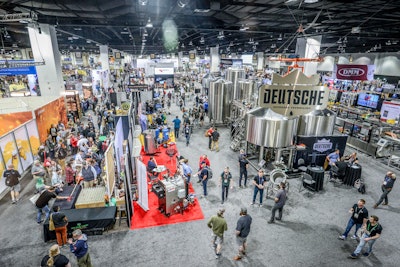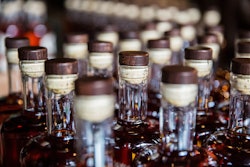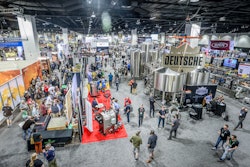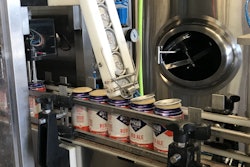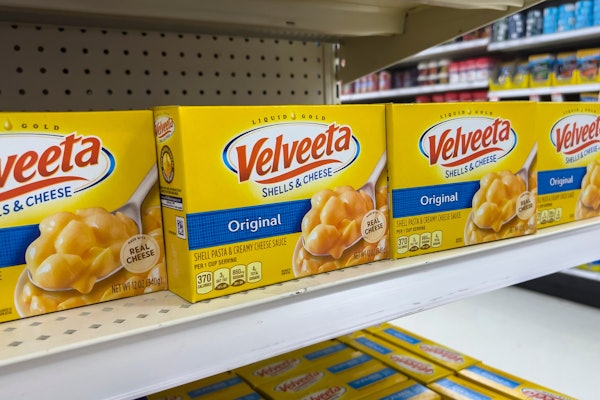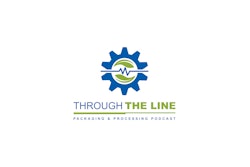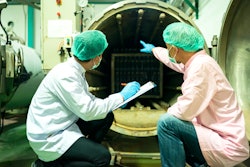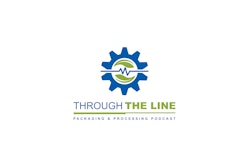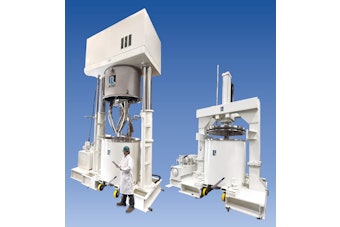Paul Gatza, SVP of the professional brewing division, and Bart Watson, chief economist, both of the Brewers Association, confirmed what we've recently reported at Packaging World: Craft and independent brewery growth is showing signs of slowing, easing from a boom into more of a measured and sustained growth pattern.
While the overall beer market was down by 1 percent in 2018, craft beer and imported beer were up by 4 percent each. While growth has fallen to 4 percent in recent years, off record, untenable highs of 15, 17 and 18 percent in 2012-2014, it matches its 4 percent growth in 2017, a demonstrated sustainable growth.
"High-end is where the growth is occurring ... period," Watson says in the Wednesday presentation at the Craft Brewers Conference this week in Denver. He and Gaza also describe a splintering consumer base, hardly the monolithic target market of decades ago. Health and wellness, community and dating, and business norms all provide potential customer pockets. The beer industry in general and craft brews alike are investing in all sorts of new flavor combinations and ingredients that will undoubtedly lead to new drink opportunities.
The numbers bear out that craft and independent brewers certainly play in this high-end realm. The gap between their volume and their percentage of the market continues to widen. In 2013, they held about 7 percent volume and 14 percent market share. In 2018, that comes to 13.2 percent and 24.1 percent, respectively.
Given the creation of so many breweries in recent boom years between 2012 and 2015, it's just a fact that more breweries have been closing. A record 219 closed in 2018. But the other side of that coin is the 1,049 openings in 2018, with 3,000-plus having opened over the past three years. So while growth has certainly slowed, it's nowhere near a saturation point in most markets.
Newer craft breweries enjoy much quicker growth than more established ones, which stands to reason as breweries hit a certain natural stasis point within the confines of what their specific market will bear. As such, breweries that opened between 2015 and 2018 grew by 53.4 percent in beer barrel volume, or 872,000 barrels, compared to breweries that opened before 2014 who grew by 0.5 percent in barrel volume, or 105,000 overall.
And more breweries are on the way. At the end of 2018, there were more than 10,000 active TTB (Alcohol and Tobacco Tax and Trade Bureau) permits in existence, indicating that more than 2,500 breweries are still in the planning stages.
Breweries have invested in their equipment and production capacity, but as such, their capacity has grown at a rate that outpaces overall growth. Capacity is now roughly double actual production throughout the craft and independent brew markets. But beer prices at the high end allow this disparity to exist, and that's especially true of retail beer. IRI data reveals that the average Brewers Association member case prices were $38.88 in 2018, up 1.6 percent or 61 cents over the previous year. And according to Nielsen CGA, on-premise prices only went up 1.4 percent by comparison.
By the numbers:
- Brewpubs grew 13.1 percent, to 1.6 million barrels
- Microbreweries grew 16 percent, to 5.8 million barrels
- Taprooms grew 40.2 percent, to 809,000 barrels
- Regional brewers were flat over 2017, with 18.1 million barrels
A full version of the State of the Industry report can be found here on the Brewers Association website. You must be a member to download the full report.
Paul Gatza, SVP of the professional brewing division, and Bart Watson, chief economist, both of the Brewers Association, confirmed what we've recently reported at Packaging World: Craft and independent brewery growth is showing signs of slowing, easing from a boom into more of a measured and sustained growth pattern.
While the overall beer market was down by 1 percent in 2018, craft beer and imported beer were up by 4 percent each. While growth has fallen to 4 percent in recent years, off record, untenable highs of 15, 17 and 18 percent in 2012-2014, it matches its 4 percent growth in 2017, a demonstrated sustainable growth.
"High-end is where the growth is occurring ... period," Watson says in the Wednesday presentation at the Craft Brewers Conference this week in Denver. He and Gaza also describe a splintering consumer base, hardly the monolithic target market of decades ago. Health and wellness, community and dating, and business norms all provide potential customer pockets. The beer industry in general and craft brews alike are investing in all sorts of new flavor combinations and ingredients that will undoubtedly lead to new drink opportunities.
The numbers bear out that craft and independent brewers certainly play in this high-end realm. The gap between their volume and their percentage of the market continues to widen. In 2013, they held about 7 percent volume and 14 percent market share. In 2018, that comes to 13.2 percent and 24.1 percent, respectively.
Given the creation of so many breweries in recent boom years between 2012 and 2015, it's just a fact that more breweries have been closing. A record 219 closed in 2018. But the other side of that coin is the 1,049 openings in 2018, with 3,000-plus having opened over the past three years. So while growth has certainly slowed, it's nowhere near a saturation point in most markets.
Newer craft breweries enjoy much quicker growth than more established ones, which stands to reason as breweries hit a certain natural stasis point within the confines of what their specific market will bear. As such, breweries that opened between 2015 and 2018 grew by 53.4 percent in beer barrel volume, or 872,000 barrels, compared to breweries that opened before 2014 who grew by 0.5 percent in barrel volume, or 105,000 overall.
And more breweries are on the way. At the end of 2018, there were more than 10,000 active TTB (Alcohol and Tobacco Tax and Trade Bureau) permits in existence, indicating that more than 2,500 breweries are still in the planning stages.
Breweries have invested in their equipment and production capacity, but as such, their capacity has grown at a rate that outpaces overall growth. Capacity is now roughly double actual production throughout the craft and independent brew markets. But beer prices at the high end allow this disparity to exist, and that's especially true of retail beer. IRI data reveals that the average Brewers Association member case prices were $38.88 in 2018, up 1.6 percent or 61 cents over the previous year. And according to Nielsen CGA, on-premise prices only went up 1.4 percent by comparison.
By the numbers:
- Brewpubs grew 13.1 percent, to 1.6 million barrels
- Microbreweries grew 16 percent, to 5.8 million barrels
- Taprooms grew 40.2 percent, to 809,000 barrels
- Regional brewers were flat over 2017, with 18.1 million barrels
A full version of the State of the Industry report can be found here on the Brewers Association website. You must be a member to download the full report.
"High-end is where the growth is occurring ... period," Watson says in the Wednesday presentation at the Craft Brewers Conference this week in Denver. He and Gaza also describe a splintering consumer base, hardly the monolithic target market of decades ago. Health and wellness, community and dating, and business norms all provide potential customer pockets. The beer industry in general and craft brews alike are investing in all sorts of new flavor combinations and ingredients that will undoubtedly lead to new drink opportunities.
The numbers bear out that craft and independent brewers certainly play in this high-end realm. The gap between their volume and their percentage of the market continues to widen. In 2013, they held about 7 percent volume and 14 percent market share. In 2018, that comes to 13.2 percent and 24.1 percent, respectively.
"High-end is where the growth is occurring ... period," Watson says in the Wednesday presentation at the Craft Brewers Conference this week in Denver. He and Gaza also describe a splintering consumer base, hardly the monolithic target market of decades ago. Health and wellness, community and dating, and business norms all provide potential customer pockets. The beer industry in general and craft brews alike are investing in all sorts of new flavor combinations and ingredients that will undoubtedly lead to new drink opportunities.
The numbers bear out that craft and independent brewers certainly play in this high-end realm. The gap between their volume and their percentage of the market continues to widen. In 2013, they held about 7 percent volume and 14 percent market share. In 2018, that comes to 13.2 percent and 24.1 percent, respectively.
"High-end is where the growth is occurring ... period," Watson says in the Wednesday presentation at the Craft Brewers Conference this week in Denver. He and Gaza also describe a splintering consumer base, hardly the monolithic target market of decades ago. Health and wellness, community and dating, and business norms all provide potential customer pockets. The beer industry in general and craft brews alike are investing in all sorts of new flavor combinations and ingredients that will undoubtedly lead to new drink opportunities.
The numbers bear out that craft and independent brewers certainly play in this high-end realm. The gap between their volume and their percentage of the market continues to widen. In 2013, they held about 7 percent volume and 14 percent market share. In 2018, that comes to 13.2 percent and 24.1 percent, respectively.
Newer craft breweries enjoy much quicker growth than more established ones, which stands to reason as breweries hit a certain natural stasis point within the confines of what their specific market will bear. As such, breweries that opened between 2015 and 2018 grew by 53.4 percent in beer barrel volume, or 872,000 barrels, compared to breweries that opened before 2014 who grew by 0.5 percent in barrel volume, or 105,000 overall.
And more breweries are on the way. At the end of 2018, there were more than 10,000 active TTB (Alcohol and Tobacco Tax and Trade Bureau) permits in existence, indicating that more than 2,500 breweries are still in the planning stages.
Breweries have invested in their equipment and production capacity, but as such, their capacity has grown at a rate that outpaces overall growth. Capacity is now roughly double actual production throughout the craft and independent brew markets. But beer prices at the high end allow this disparity to exist, and that's especially true of retail beer. IRI data reveals that the average Brewers Association member case prices were $38.88 in 2018, up 1.6 percent or 61 cents over the previous year. And according to Nielsen CGA, on-premise prices only went up 1.4 percent by comparison.
By the numbers:
- Brewpubs grew 13.1 percent, to 1.6 million barrels
- Microbreweries grew 16 percent, to 5.8 million barrels
- Taprooms grew 40.2 percent, to 809,000 barrels
- Regional brewers were flat over 2017, with 18.1 million barrels
A full version of the State of the Industry report can be found here on the Brewers Association website. You must be a member to download the full report.
And more breweries are on the way. At the end of 2018, there were more than 10,000 active TTB (Alcohol and Tobacco Tax and Trade Bureau) permits in existence, indicating that more than 2,500 breweries are still in the planning stages.
Breweries have invested in their equipment and production capacity, but as such, their capacity has grown at a rate that outpaces overall growth. Capacity is now roughly double actual production throughout the craft and independent brew markets. But beer prices at the high end allow this disparity to exist, and that's especially true of retail beer. IRI data reveals that the average Brewers Association member case prices were $38.88 in 2018, up 1.6 percent or 61 cents over the previous year. And according to Nielsen CGA, on-premise prices only went up 1.4 percent by comparison.
By the numbers:
- Brewpubs grew 13.1 percent, to 1.6 million barrels
- Microbreweries grew 16 percent, to 5.8 million barrels
- Taprooms grew 40.2 percent, to 809,000 barrels
- Regional brewers were flat over 2017, with 18.1 million barrels
A full version of the State of the Industry report can be found here on the Brewers Association website. You must be a member to download the full report.
